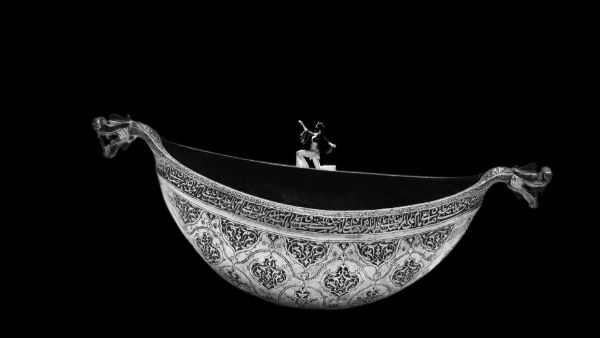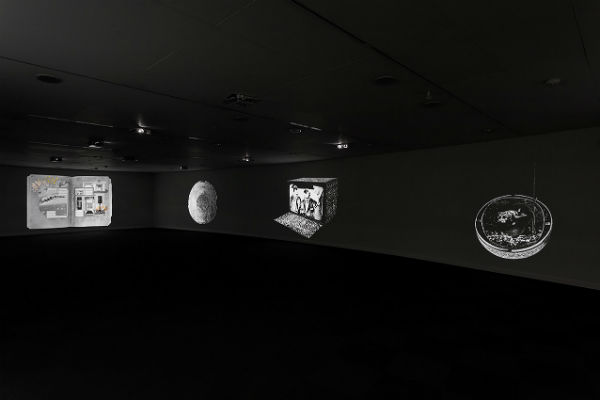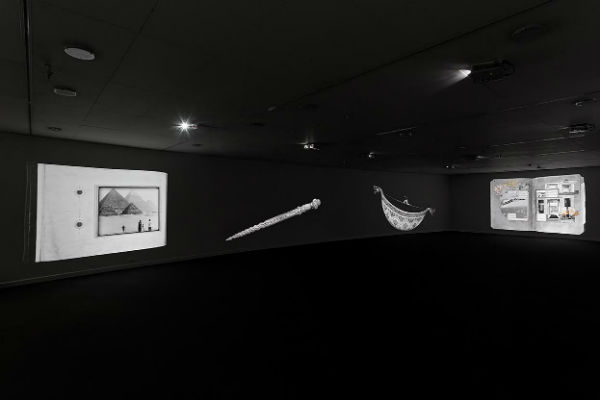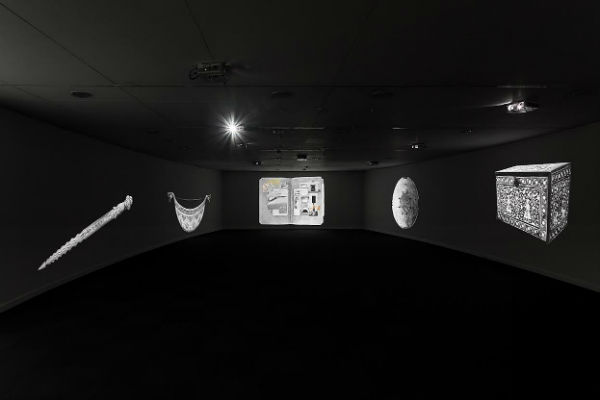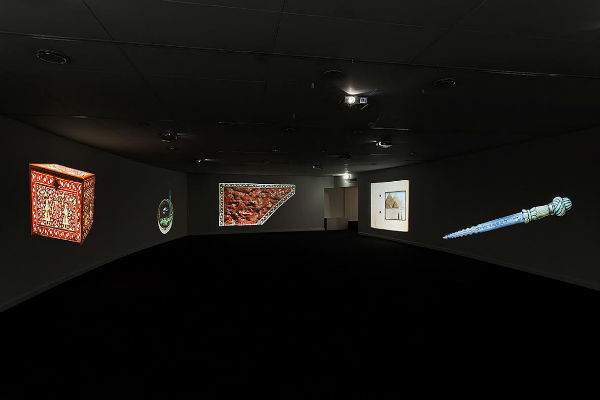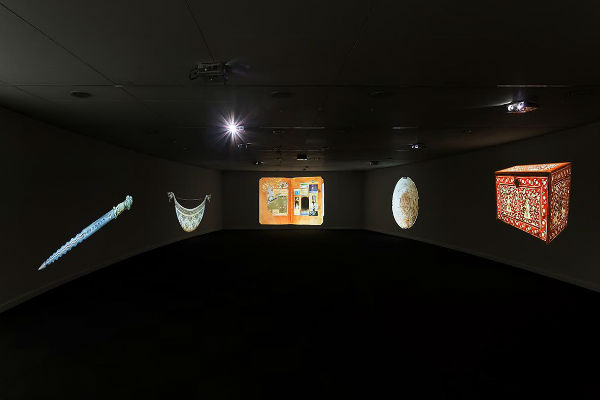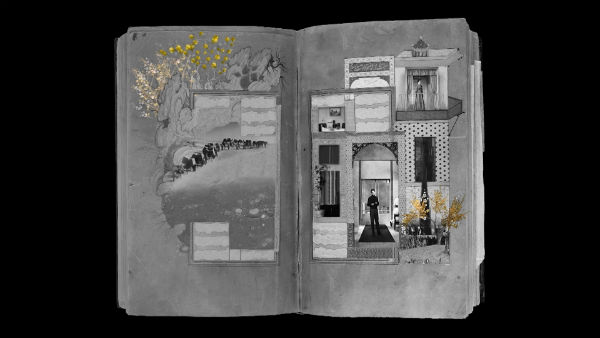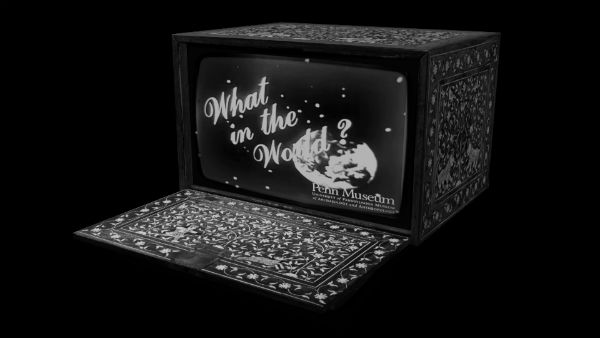Nevet Yitzhak
Orient Express
The L.A. Mayer Museum for Islamic Art, Jerusalem
Dec. 2013 - June 2014
In the show "Orient Express", created for and inspired by the Museum of Islamic Art, Nevet Yitzhak exhibits video and animation works based on color reproduction photographs of artifacts from the museum's collection, originally used for documenting, registering, and cataloguing the collection.[1]
In an age that shies away from the prevalent canons for evaluating and cataloguing "Islamic Art", and furthermore challenges this inclusive category, Yitzhak offers in this exhibition a reflective interpretation on the nature of the museum's collection – a collection of ancient functional and liturgical objects – and raises questions concerning the role of the museum as a space that preserves time, and presents and conveys knowledge.[2]
Black and white reproduction photographs of artifacts from the museum's collection – a cloth fragment, a ceramic plate, a wooden chest, a sword, a decorated bowl, an incense burner, and a page from an illustrated manuscript, are projected on the gallery's walls. The objects enlarged to a scale of 1:100 are presented as exemplars of Islamic art. The act of removing the color from the photographs left an image reminiscent of archaic archival photograph from a card catalogue of a museal collection, harking back to the days before the transition to computerized cataloguing. The monochromaticity of the photograph flattens the image, diminishes the sensuality, power, and charm of the object, and cancels the functional and artistic hierarchy between the different items, thus placing them on an equal conceptual level.
The use of catalogue photographs of the collection's objects allows the artist to address the mode of representation of an archeological-artistic article as a sign of a time and a period, and undermines the veneration and mystification these objects receive by virtue of being cultural artifacts of historic value. Yet above all, this choice turns the spotlight on the basic gap between the artistic, aesthetic, and functional object, and the academic, scholarly text written about it, which imbues it with external interpretation that for the most part stems from a Western scholarly perspective.
The methodical practice of reconstructing, restoring, and cataloguing applied to an artistic archeological object due to its inclusion in a museul collection, defines its place on the time line and bestows it with eternal life, yet at the same time revokes its original functional qualities.
Using animation, three dimensional model design, and digital collages edited from archival footage, the artists rewrites the history of the exhibited objects, gives them an imagined functionality and places them in a new context of a fabricated, fantastic-folkloristic narrative. In the exhibition "Orient Express" Yitzhak examines the conventions of constructing the patterns of representation of Islamic art through strategies of disassembling and reassembling the visual image, and offers an alternative iconographic reading of the objects in the museum's collection.
Sally Haftel Naveh
[1] "Orient Express" was the first long-distance passenger train service to offer an uninterrupted journey from Europe to the Ottoman Empire in the late 19th Century.
[2] Contemporary academic research challenges the fictive perception of Islamic Art as a monolithic unit that incorporates all Near Eastern artifacts under the same heading.

